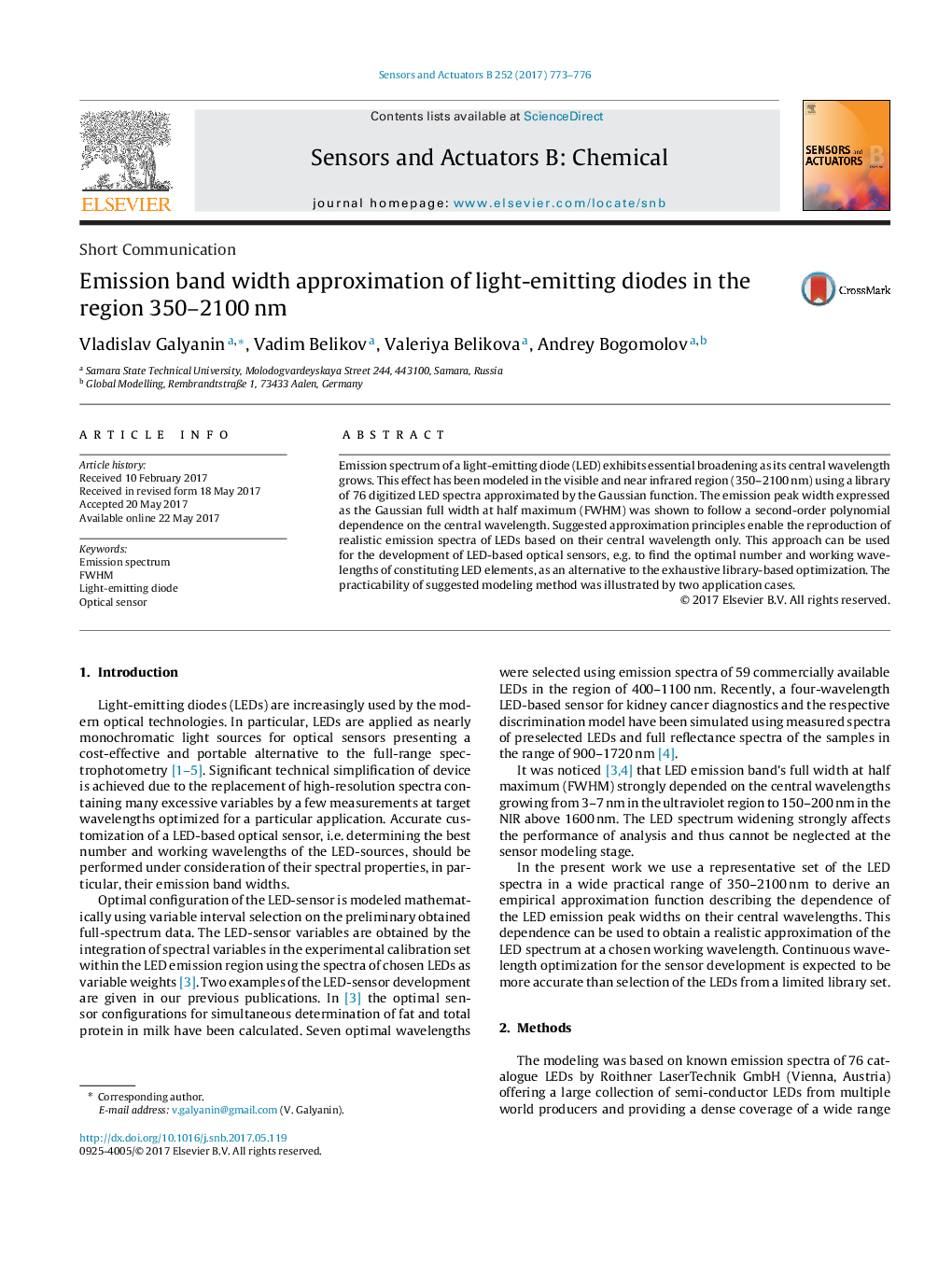| Article ID | Journal | Published Year | Pages | File Type |
|---|---|---|---|---|
| 5009131 | Sensors and Actuators B: Chemical | 2017 | 4 Pages |
â¢Broadening of 76 LED emission spectra in the range 350-2100 nm was modeled.â¢LED spectra were approximated using the Gaussian functions.â¢Polynomial dependence of Gaussian width on central wavelength was established.â¢LED-sensor modeling using real and approximated spectra showed similar results.â¢Suggested approach simplifies the development of LED-based analyzers.
Emission spectrum of a light-emitting diode (LED) exhibits essential broadening as its central wavelength grows. This effect has been modeled in the visible and near infrared region (350-2100Â nm) using a library of 76 digitized LED spectra approximated by the Gaussian function. The emission peak width expressed as the Gaussian full width at half maximum (FWHM) was shown to follow a second-order polynomial dependence on the central wavelength. Suggested approximation principles enable the reproduction of realistic emission spectra of LEDs based on their central wavelength only. This approach can be used for the development of LED-based optical sensors, e.g. to find the optimal number and working wavelengths of constituting LED elements, as an alternative to the exhaustive library-based optimization. The practicability of suggested modeling method was illustrated by two application cases.
